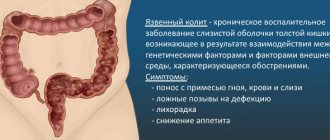Voltaren Patch for pain in the back, muscles and joints, transdermal patch 15 mg/day No. 2
A country
Greece, Japan
The country of production may vary depending on the batch of goods. Please check with the operator for detailed information when confirming your order.
Description
Voltaren is the only therapeutic patch.* The components of the patch are continuously delivered to the source of pain, eliminating pain and inflammation.
Used for: - Back pain due to inflammatory and degenerative diseases of the spine - Joint pain - Muscle pain - Inflammation and swelling of soft tissues and joints due to injuries and rheumatic diseases. It is enough to apply only 1 patch for 24 hours**. Advantages of the Voltaren patch: • Applied once a day • Invisible under clothing (ultra-thin, flesh-colored) • Does not stain hands and clothes * Among Voltaren products in Russia ** Instructions for medical use, RU No. LP-001089
Compound
Each transdermal patch 15 mg/day (70 cm2) contains: Active ingredient: 15 mg diclofenac sodium (1%). Excipients: levomenthol 22.5 mg, methylpyrrolidone 60.0 mg, propylene glycol esters of fatty acids 30.0 mg, citric acid 6.0 mg, isoprene styrene copolymer 536.1 mg, polyisobutylene 30.0 mg, esterified gum 300.0 mg , mercaptobenzimidazole 3.7 mg, butylated hydroxytoluene 3.7 mg, liquid paraffin up to 1500.00 mg; base made of polyester fibers (50 den) 70 cm2; protective film made of polyester (thickness 75 microns) 70 cm2.
Product description
Rectangular patches with rounded edges, consisting of a beige polyester base with a uniformly applied adhesive layer from colorless to pale yellow with a faint aromatic odor. The adhesive surface is covered with a transparent protective film of polyethylene with two transverse cuts, one of which has a wavy line. A drawing is applied to the transparent protective film showing how to remove the film from the surface of the patch. The size of the patch is 70 x 100 mm.
pharmachologic effect
Voltaren® in the form of a transdermal patch is a base with an applied adhesive layer containing diclofenac, which has pronounced analgesic and anti-inflammatory properties.
The mechanisms of action of diclofenac are based on inhibition of prostaglandin synthesis. The Voltaren® patch provides anti-inflammatory and analgesic effects at the site of application, eliminating pain and reducing swelling associated with the inflammatory process. Pharmacokinetics Absorption and distribution in the body: The amount of diclofenac absorbed systemically from the Voltaren® patch over 24 hours is similar to that when using an equivalent amount of Voltaren® Emulgel® (gel for external use 1%). 99.7% of diclofenac is bound to serum proteins, mainly to albumin (99.4%). Elimination: The total systemic clearance of diclofenac from plasma is 263 ± 56 ml/min. The terminal half-life in plasma is 1-2 hours. Four metabolites, including two active ones, also have a short half-life of 1-3 hours. One metabolite, 3`-hydroxy-4`-methoxydiclofenac, has a longer half-life, however, is inactive. Diclofenac and its metabolites are excreted mainly in the urine. In patients with impaired renal function, accumulation of diclofenac and its metabolites does not occur. In patients suffering from chronic hepatitis or undecompensated cirrhosis, the kinetics and metabolism of diclofenac follow the same pattern as in patients without liver disease. Preclinical studies have shown the safety of using the drug.
Indications for use
Back pain due to inflammatory and degenerative diseases of the spine (sciatica, osteoarthritis, lumbago, sciatica). Pain in the joints (fingers, knees, etc.) with osteoarthritis. Muscle pain (due to sprains, strains, bruises, injuries). Inflammation and swelling of soft tissues and joints due to injuries and rheumatic diseases (tenosynovitis, bursitis, lesions of periarticular tissues).
Contraindications
Hypersensitivity to diclofenac or other components of the drug; tendency to develop attacks of bronchial asthma, skin rashes or acute rhinitis when using acetylsalicylic acid or other NSAIDs; pregnancy (III trimester); breast-feeding; children's age (up to 15 years); violation of the integrity of the skin at the site where the patch is supposed to be applied. With caution: hepatic porphyria (exacerbation), erosive and ulcerative lesions of the gastrointestinal tract, severe dysfunction of the liver and kidneys, chronic heart failure, bronchial asthma, old age.
Use during pregnancy and lactation
The use of the drug in pregnant women has not been studied, therefore the Voltaren® patch should not be used during pregnancy, especially in the third trimester due to the possibility of decreased uterine tone and/or premature closure of the fetal ductus arteriosus. Animal studies have not revealed any direct or indirect negative effects on pregnancy, childbirth, embryonic or post-embryonic development. There is no data on the penetration of the drug into breast milk, therefore the Voltaren® patch is not recommended for use during breastfeeding.
Directions for use and doses
Externally in the form of applications to the skin. Adults and adolescents over 15 years of age: The Voltaren® patch is applied to the skin over the painful area for 24 hours. Only 1 patch is allowed to be used per day. When treating soft tissue injuries, the Voltaren® patch is used for no more than 14 days, and when treating diseases of muscles and joints - no more than 21 days, unless there are special recommendations from a doctor. If there is no improvement after 7 days and if your health worsens, you should consult a doctor. Children: The use of Voltaren® patch in children under 15 years of age is not recommended. Elderly: Similar to the method of administration and doses for adults
Side effect
Adverse reactions are mainly characterized by moderate and transient skin manifestations at the site of application of the patch. Very rare manifestations (Overdose) The extremely low systemic absorption of the active components and the dosage form of the drug when used externally makes an overdose almost impossible.
Interaction with other drugs
Voltaren® patch may enhance the effect of drugs that cause photosensitivity. Clinically significant interactions with other drugs have not been described.
special instructions
The Voltaren® patch should only be applied to intact skin, avoiding contact with open wounds. The drug should not come into contact with the eyes and mucous membranes. When using the Voltaren® patch for too long a time, the possibility of developing systemic adverse reactions cannot be excluded. When additionally using other dosage forms of diclofenac, its quantitative content in the patch should be taken into account so as not to exceed the maximum daily dose of diclofenac (150 mg/day).
Release form
Transdermal patch 15 mg/day (area 70 cm2). 2 patches in an aluminum foil bag. Text or label is applied directly to the package. The package along with instructions for use is placed in a cardboard box.
Storage conditions
Store at a temperature not exceeding 25 C in the original packaging. Keep out of the reach of children.
Best before date
2 years. Do not use after expiration date.
Voltaren
Use during pregnancy and breastfeeding
There is insufficient data on the safety of diclofenac in pregnant women.
Therefore, Voltaren® should be prescribed in the first and second trimesters of pregnancy only in cases where the expected benefit to the mother outweighs the potential risk to the fetus. Voltaren®, like other inhibitors of prostaglandin synthesis, is contraindicated in the last 3 months of pregnancy (possible suppression of uterine contractility and premature closure of the ductus arteriosus in the fetus). Despite the fact that the drug Voltaren®, like other NSAIDs, passes into breast milk in small quantities, the drug should not be prescribed to nursing women to prevent undesirable effects on the child. If it is necessary for a nursing woman to use the drug, stop breastfeeding.
Since Voltaren®, like other NSAIDs, can have a negative effect on fertility, women planning pregnancy are not recommended to take the drug.
For patients undergoing examination and treatment for infertility, the drug should be discontinued.
Use for liver dysfunction
During the period of use of the drug Voltaren®, an increase in the activity of one or more liver enzymes may be observed; with long-term therapy with the drug, monitoring of liver function is indicated as a precautionary measure. If liver dysfunction persists and progresses or signs of liver disease or other symptoms (for example, eosinophilia, rash, etc.) occur, the drug should be discontinued. It should be borne in mind that hepatitis during the use of the drug Voltaren® can develop without prodromal phenomena.
Use for renal impairment
During therapy with Voltaren®, it is recommended to monitor renal function in patients with hypertension, impaired cardiac or renal function, the elderly, patients receiving diuretics or other drugs that affect renal function, as well as in patients with a significant decrease in the volume of circulating blood plasma of any etiology, for example, during the period before and after major surgical interventions. After discontinuation of drug therapy, normalization of renal function indicators to pre-baseline values is usually observed.
Use in children
The drug in this dosage should not be used in children and adolescents under 18 years of age.
special instructions
Gastrointestinal tract damage:
When using diclofenac, phenomena such as bleeding or ulceration/perforation of the gastrointestinal tract, in some cases with fatal outcome, were observed. These events may occur at any time when using drugs in patients with or without previous symptoms and a history of serious gastrointestinal diseases. In older patients, such complications can have serious consequences. If bleeding or gastrointestinal ulceration develops in patients receiving Voltaren®, the drug should be discontinued. To reduce the risk of toxic development of gastrointestinal complications, as well as in patients receiving therapy with low doses of acetylsalicylic acid (Aspirin) or other drugs that can increase the risk of gastrointestinal damage, gastroprotectors (for example, proton pump inhibitors or misoprostol) should be taken. Patients with a history of gastrointestinal lesions, especially the elderly, should report all symptoms of the digestive system to the doctor.
Patients with bronchial asthma
Exacerbation of asthma (NSAID intolerance/NSAID-induced asthma), angioedema and urticaria are most often observed in patients suffering from bronchial asthma, seasonal allergic rhinitis, nasal polyps, COPD or chronic infectious diseases of the respiratory tract (especially those associated with allergic rhinitis-like symptoms). In this group of patients, as well as in patients with allergies to other drugs (rash, itching or urticaria), special caution should be observed when using the drug Voltaren® (preparedness for resuscitation measures).
Skin reactions
Serious dermatological reactions such as exfoliative dermatitis, Stevens-Johnson syndrome, toxic epidermal necrolysis, in some cases fatal, have been reported very rarely with the use of diclofenac. The highest risk and incidence of severe dermatological reactions were observed in the first month of treatment with diclofenac. If patients receiving Voltaren® develop the first signs of skin rash, damage to the mucous membranes or other symptoms of hypersensitivity, the drug should be discontinued. In rare cases, in patients who are not allergic to diclofenac, anaphylactic/anaphylactoid reactions may develop when using Voltaren®.
Effects on the liver
Since during the period of use of the drug Voltaren® there may be an increase in the activity of one or more liver enzymes, during long-term therapy with the drug, monitoring of liver function is indicated as a precaution. If liver dysfunction persists and progresses or signs of liver disease or other symptoms (for example, eosinophilia, rash, etc.) occur, the drug should be discontinued. It should be borne in mind that hepatitis during the use of the drug Voltaren® can develop without prodromal phenomena.
Effects on the kidneys
During therapy with Voltaren®, it is recommended to monitor renal function in patients with hypertension, impaired cardiac or renal function, the elderly, patients receiving diuretics or other drugs that affect renal function, as well as in patients with a significant decrease in the volume of circulating blood plasma of any etiology , for example, in the period before and after major surgical interventions. After discontinuation of drug therapy, normalization of renal function indicators to pre-baseline values is usually observed.
Effects on the cardiovascular system
NSAID therapy, incl. Diclofenac, particularly long-term and high-dose therapy, may be associated with a small increase in the risk of serious cardiovascular thrombotic events (including myocardial infarction and stroke).
In patients with diseases of the cardiovascular system and a high risk of developing diseases of the cardiovascular system (for example, with arterial hypertension, hyperlipidemia, diabetes mellitus, smokers), the drug should be used with extreme caution, at the lowest effective dose for the shortest possible duration of treatment, since the risk of thrombotic complications increases with increasing dose and duration of treatment. With long-term therapy (more than 4 weeks), the daily dose of diclofenac in such patients should not exceed 100 mg. The effectiveness of treatment and the patient's need for symptomatic therapy should be periodically assessed, especially in cases where its duration is more than 4 weeks. When the first symptoms of thrombotic disorders appear (for example, chest pain, feeling short of breath, weakness, speech impairment), the patient should immediately seek medical help.
Impact on the hematopoietic system
Voltaren® may temporarily inhibit platelet aggregation. Therefore, in patients with hemostasis disorders, it is necessary to carefully monitor relevant laboratory parameters. With long-term use of the drug Voltaren®, it is recommended to conduct regular clinical tests of peripheral blood.
Masking signs of an infectious process
The anti-inflammatory effect of the drug Voltaren® may complicate the diagnosis of infectious processes.
Use simultaneously with other NSAIDs
Voltaren® should not be used concomitantly with NSAIDs, including selective COX-2 inhibitors, due to the risk of increased adverse events.
Impact on the ability to perform potentially hazardous activities that require special attention and quick reactions (driving vehicles, working with moving mechanisms, etc.)
Patients who experience visual disturbances, dizziness, drowsiness, vertigo or other central nervous system disorders while using the drug Voltaren® should not drive vehicles or operate machinery.






